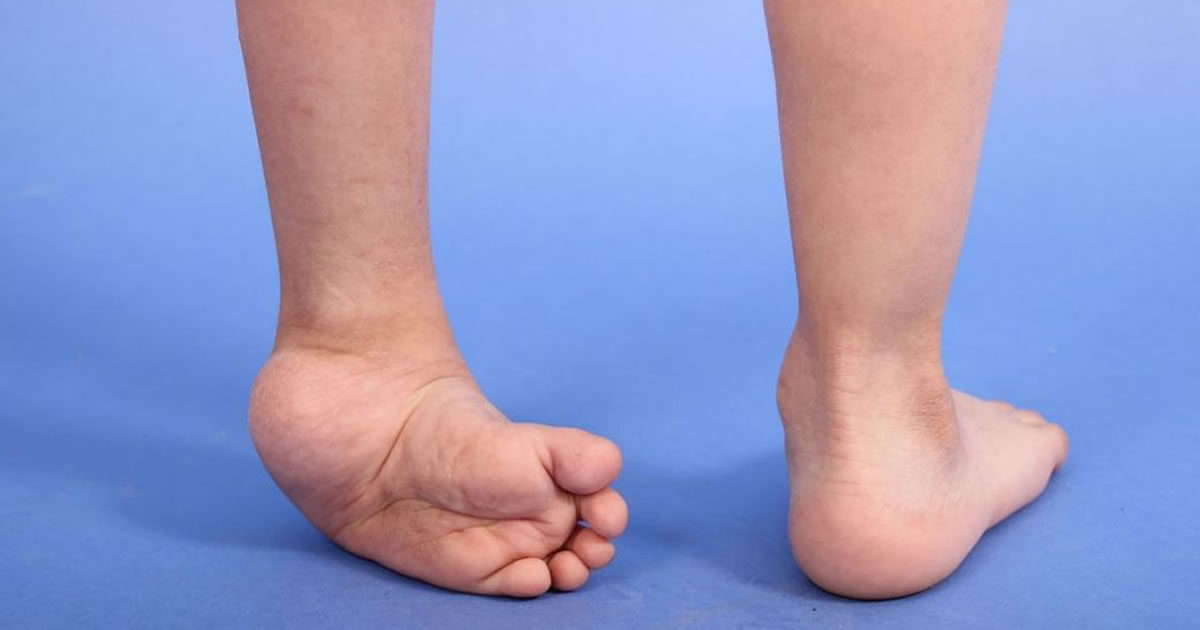
A clubfoot or equine varus is the type of foot that does not rest on the ground normally . In this kind of malformation in the foot is observed when the foot involuntarily appears flexed to one side (inward and / or downward). It can manifest on one or both feet randomly.
It is a congenital deformity, that is, you are born with this pathology.
Although the term clubfoot can be applied in theory to any deformity of the foot, in practice it is used to define the malformation that associates the following deformities: equine, varus, adduct, cavus and internal rotation of the tibia. This deformation of the foot occurs when tight tendons and ligaments prevent the foot from stretching to the correct position.
“The clubfoot or congenital clubfoot is a malformation that consists of a three-dimensional deformation of the foot in which the bone structures are altered in their shape and in the orientation of their joint profiles. Clinically presents equine, varus and supination of the hindfoot, and adduction of the forefoot”,
DIAGNOSTIC
Often, the doctor recognizes the clubfoot varo, shortly after birth, simply by observing the shape and positioning of the newborn’s foot. Occasionally, your doctor may order an X-ray to know exactly the severity of clubfoot, but an X-ray is usually not necessary.
It is possible to clearly recognize, in most cases equine clubfoot , before birth by a routine ultrasound from the 20th week of pregnancy. Although no steps can be taken to fix the problem before birth, having knowledge of the disease can give you time to get all the information about clubfoot and consult the right health experts, such as a pediatric orthopedic surgeon and a genetic counselor.
TRATAMIENTO
Because a newborn baby’s bones, joints, and tendons are flexible enough, treatment for clubfoot should usually be started one to two weeks after birth. The goal of treatment is to improve the appearance of the child’s foot and its functioning before the child learns to walk, in hopes of preventing long-term disabilities.
Treatment options include:
- Stretching and a cast (Ponseti method)
- Surgery
Stretching and plaster (Ponseti method)
This is the most common treatment for clubfoot. Your doctor will do the following:
- You will move the baby’s foot to a correct position and then place it in a cast to hold it in place
- Reposition and reposition a cast on the baby’s foot once a week for several months
- Perform a minor surgical procedure to lengthen the Achilles tendon (percutaneous Achilles tendon tenotomy) toward the end of this process
After you’ve realigned the shape of your baby’s foot, you’ll need to maintain it using one or more of the following methods:
- Do stretching exercises with the baby
- Put on special shoes “THERAPEUTIC AND BIOMECHANICAL FOOTWEAR BOCCIO” and immobilization devices
- Parents should ensure that their child wears “BOCCIO THERAPEUTIC AND BIOMECHANICAL FOOTWEAR” shoes and immobilization devices as long as necessary, usually all the time for three months and then at night and at nap times for up to three years.
For this method to be successful, parents must apply the immobilization devices following the doctor’s instructions so that the foot does not return to the original position. The main reason why sometimes this procedure does not work is that immobilization devices are not used as directed by your doctor.
Surgery
If a baby’s clubfoot is severe or does not respond to nonsurgical treatments, more invasive surgery may be required. A traumatologist may lengthen or reposition tendons and ligaments to help put the foot in a better position. After surgery, the baby will have a cast for up to two months, and then will have to wear an immobilization device for about a year, to prevent the equine clubfoot from returning.
Even with treatment, clubfoot may not be fully correctable. But in most cases, babies treated at an early age have the option of using “THERAPEUTIC AND BIOMECHANICAL FOOTWEAR BOCCIO” shoes manufactured according to the individual and particular need of each patient, made with 100% natural materials, comfortable and designed especially for this type of situation and so when they grow up and have full and active lives.
